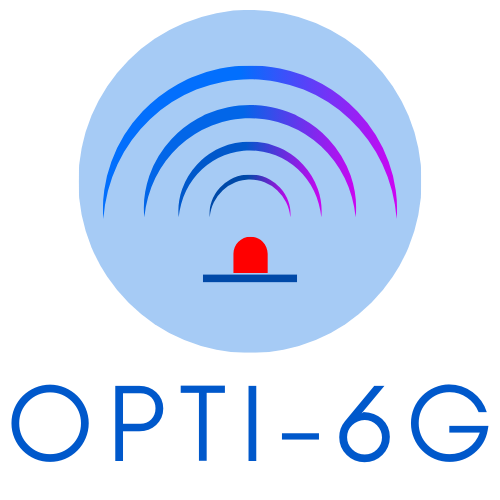Use Cases/scenarios
Far-reaching benefits of this architecture are that its common OWC in-building network resources can be more easily shared between MNOs by slicing and that the networks functions virtualisation (NFV) solution provides an Application Programmers Interface (API) that allows third party service providers to write specialized network applications to manage multi-MNO networks in homes, businesses and public space buildings and environments such as tunnels, train stations and airports.
The challenge that is addressed by OPTI-6G project is to design low cost, light weight, low electronic footprint OWC Remote Units (O-RUs) that can be elegantly integrated into near IR access points and whose receivers can be integrated into a myriad of user equipment such as extended reality headsets, drones, robots, AGVs etc. and compare it with an existing 3.5 GHz 5G cell-free network solution. The main benefit is the availability of broadband communications services greater than 1 Gbps ubiquitously available throughout buildings from pervasively located OWC license free access points.
5G mobile network users will significantly benefit as they will have the choice of a wider range of network services from third party network and home services providers who for example could provide substantially higher bit rates using OWC frequencies at in-door environments, whilst also significantly reducing the level of EM exposure.
Results
OPTI-6G project will significantly benefit 5G MNOs as it will considerably reduce EM interference that would have otherwise been generated by Home gNBs, thereby increasing throughput in the wider 5G mobile network and improving mobile access to users within buildings without incurring interference with the wider 5G mobile network and thus increasing the value of their customers’ buildings.
The net result is that there will be a considerable reduction of transmission power and EMF radiation levels, so the user equipment will potentially consume only one tenth of the energy, resulting in 90% energy savings, a tenfold increase in battery lifetime during use in buildings. This will be compared with a corresponding sub 6 GHz solution. The combined effects of a reduction in delay spread due to smaller room geometries, the adapted 3GPP 5G approach and the considerable reduction in propagation delays is expected to result in a reduction in latency to within 1 ms.




